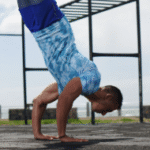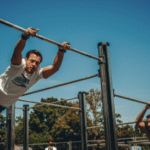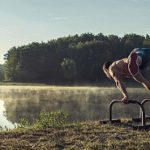Handstand alignment and form
Mastering the handstand is an elegant display of strength and control, but its true foundation lies in perfect alignment and form . Without it, a handstand becomes a strenuous battle against gravity, often leading to instability, energy leaks, and a higher risk of injury. For anyone in Houston working on their handstand, understanding and practicing proper alignment is the most crucial step to progress.
The Goal: The Straight Line
The ultimate goal of handstand alignment is to stack your body in a single, straight line, from your wrists all the way up to your ankles. This allows your skeleton to bear the weight, minimizing the muscular effort required and making the hold feel lighter and more stable. Think of it as a solid column.
Key Alignment Cues and Drills
Proper alignment is built from the ground up. Here’s a breakdown of the key components and the drills to help you achieve them.
- The Hands and Wrists: Your Base
Your hands are your foundation. A solid base is where everything begins.
Hand Position: Place your hands shoulder-width apart, with your fingers spread wide. Press your fingertips into the floor and grip the ground as if you were trying to grab a handful of sand. This activates your forearms and gives you more control.
Wrist Angle: Keep your wrists at a 90-degree angle to the floor. If your wrists are flexible, this should be a straight line from your fingers to your elbows.
Drill: Practice wrist push-ups and first knuckle raises on the floor to build the strength and mobility needed to support your body weight.
- The Shoulders: The Primary Stabilizers
Your shoulders need to be fully flexed and in a “pushed-up” position. This is often called a “protracted” or “scapular push” position.
Shoulder Position: Actively push the floor away, shrugging your shoulders up towards your ears. This helps to lock out your arms and create a stable platform.
Drill: Wall walks are excellent for teaching this. Walk your hands toward the wall, pushing the floor away as you do, until your chest is close to the wall. This forces your shoulders into a fully protracted position.
- The Core and Hips: The Link
Your core is the bridge between your upper and lower body. A tight core prevents your lower back from arching, a common mistake known as the “banana handstand.”
Core Position: Squeeze your glutes tightly and engage your abs by pulling your belly button towards your spine. Imagine you are trying to pull your ribs down towards your hips.
Hip Position: Your hips should be directly over your shoulders.
Drill: The hollow body hold is the most effective drill for teaching core engagement and maintaining a neutral spine. Another great drill is the belly-to-wall handstand . By facing the wall, you are forced to straighten your body and engage your core to prevent your back from arching.
- The Legs and Feet: The Finish
The legs and feet complete the straight line.
Leg Position: Keep your legs straight and squeeze them together, as if they were one single unit. This helps to maintain control and provides tension throughout your body.
Foot Position: Point your toes strongly toward the ceiling. This creates a clean, vertical line and adds to the full-body tension.
Putting It All Together: A Simple Handstand Form Checklist
Before kicking up, go through this mental checklist:
- Hands: Shoulder-width, fingers spread, gripping the floor.
- Shoulders: Pushed away from the floor, shrugging toward your ears.
- Core: Engaged, abs tight, glutes squeezed.
- Hips: Stacked directly over shoulders.
- Legs: Squeezed together.
- Toes: Pointed.
Finding a Coach in Houston
While these cues are helpful, there is no substitute for a professional eye. A coach can provide real-time feedback and corrections that are hard to get on your own.
Mekanix Houston: This calisthenics gym offers “Hand Balancing” classes for all levels. Their coaches specialize in proper body alignment and can guide you through the drills needed to build a perfect handstand.
Calisthenics Club Houston: This club focuses on bodyweight training and has a specific hand-balancing program. They can help you with the progressions from wall-supported handstands to freestanding holds.
Houston Handstands: For a more personalized experience, a private coach can assess your specific alignment weaknesses and create a tailored plan to help you achieve your goals safely and efficiently.
By focusing on these alignment principles and incorporating the recommended drills, you will build a handstand that is not only visually impressive but also safe, stable, and sustainable for the long run.

Handstand alignment and form
Route
Calisthenics Gym Houston Functional Bodyweight Training
Secondary phone: (346) 483-3195
Email: info@calisthenicsclubhouston.com
URL: https://calisthenicsclubhouston.com/
Monday 6:00 AM - 7:00 PM Tuesday 6:00 AM - 7:00 PM Open now Wednesday 6:00 AM - 7:00 PM Thursday 6:00 AM - 7:00 PM Friday 12:00 PM - 6:30 PM Saturday 9:45 AM - 12:00 PM Sunday 3:00 PM - 5:00 PM





